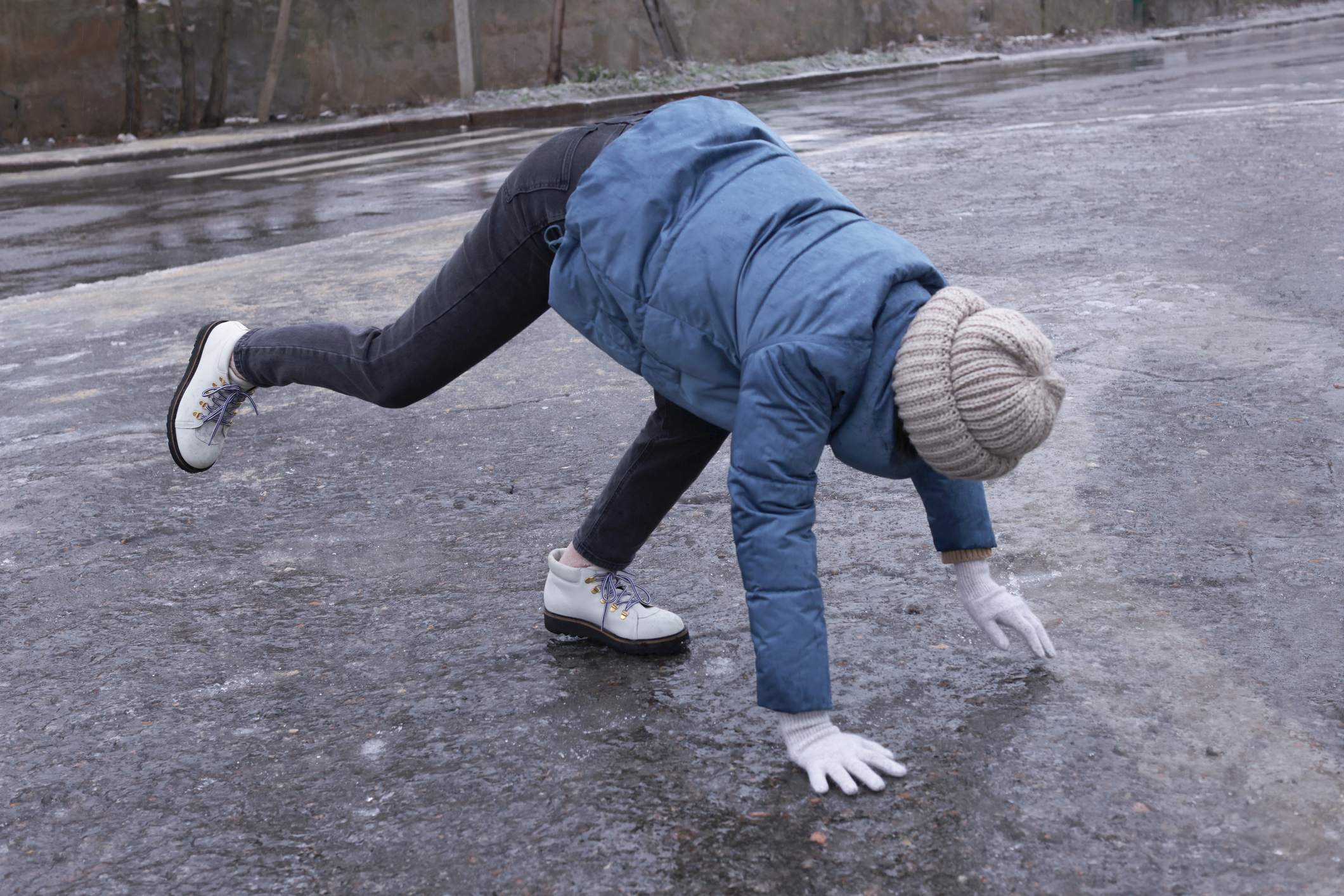Tips to avoid slips, falls and breaks


Sometimes no matter how careful you are, avoiding a fall on a snowy, icy sidewalk is hard to prevent. You think you have your footing, and the next thing you know, your foot slides from underneath you and you’re tumbling to the ground.
The cold, snowy days of winter often result in a large uptick of hand and wrist injuries due to falls as well as winter sports like ice skating, skiing and hockey.
“The common instinct when you fall is to reach out with your hand to break the fall, but this may also land you in the emergency room with a broken hand or wrist,” says Daniel Firestone, MD, orthopaedic surgeon at Nebraska Medicine who specializes in hand and wrist injuries.
Where to Go: Immediate Care vs. Emergency Room
If it is after office hours and your hand or wrist is obviously broken, go to the emergency room. If you're not sure, you can start with an Immediate Care Clinic to get X-rays. No appointment is needed and you will be billed the same as an office visit.
Immediate Care Clinic hours: weekdays: 6 to 10 p.m., weekends: 10 a.m. to 8 p.m.; and weekends/holidays: 11 a.m. to 4 p.m.
8343 S. 168th Ave.
Nebraska Medicine – Family Medicine at Bellevue
1510 Bellevue Medical Center Drive
Nebraska Medicine – Eagle Run
3685 N. 129th St.
Nebraska Medicine – Midtown
139 S. 40th St.
It may seem pretty common sense, but making sure you clear your sidewalks and driveways each time it snows and wearing sturdy shoes with a good grip on the bottom is essential in preventing falls, notes Dr. Firestone. Regularly spreading salt during subfreezing temperatures is also important to help prevent "black ice," which is just as treacherous.
Injuries to finger and hands are also common during the winter months due to improper use of snow blowers. “When we have those heavy, wet snowfalls, snow blowers tend to get clogged,” says Dr. Firestone. “Some people will try to unclog the exit chute using their hands not knowing the blades have not completely stopped.”
To help prevent these types of injuries, Dr. Firestone recommends never sticking your hand in a snow blower chute. First, turn off the blower and disengage the clutch. Wait at least five seconds, then use a stick or broom handle to clear the snow out. You can also spray the blades and chute with cooking oil spray to help prevent clogging, he notes.
If you should experience a hand or wrist injury, whether you should go to an Immediate Care Clinic or the emergency room could depend on the severity of the injury. “If it is after office hours and your hand or wrist is deformed and obviously broken, go to the emergency room as they will be better trained to treat more severe injuries,” says Dr. Firestone. “If you’re not sure if it’s broken, you can go to an Immediate Care Clinic to get X-rays. However, if it is during the day when our office is open, you can always call us first and ask if a provider is available to see you that day. If our clinical team deems the situation urgent enough to require being seen that day, we will make every attempt to get you in to be seen by an appropriate orthopaedic provider.”
If you go to an Immediate Care Clinic or the emergency room, I always recommend making a follow-up appointment with an orthopaedic surgeon who specializes in hand and wrist injuries for a complete evaluation regardless of the severity of the break,” says Dr. Firestone. “Sometimes an X-ray taken a day or two later won’t look the same. In addition, if it’s broken, the bones may slip out of place and need to be reset.”
Your hands and wrist are just too important to take chances. The human hand is very complex — each with more than two dozen bones, dozens of ligaments and more than three dozen muscles. An injury to the hand or wrist can be serious with a potentially long recovery period and even long-term complications, if not treated properly. “If it doesn’t heal right, you can develop chronic pain, stiffness and arthritis in your wrist that can worsen as you age,” says Dr. Firestone. “We will ensure it is set properly and heals as normally as possible to prevent long-term complications. If it is not set right and doesn’t heal properly, your options later down the road are much more limited.”




